Would you like to know what to do about your hydrangeas turning brown and dying? Well, we have researched this topic and have answers for you. It is vital to understand what to do if your hydrangeas are turning brown and dying for a chance to save them.
There are several reasons for hydrangeas turning brown and dying. Each will require a different solution. Here is a list of the most common reasons for hydrangeas turning brown and dying and what you should do to combat it.
- Fungus or bacteria - reduce water
- Low water - increase water
- Over fertilized - flush with water and allow to dry
In this article, we will learn what to do if your hydrangeas begin to turn brown and die. We will also learn the answers to other interesting related questions, such as how do you keep hydrangeas healthy, and do hydrangeas come back every year? Keep reading to learn more.
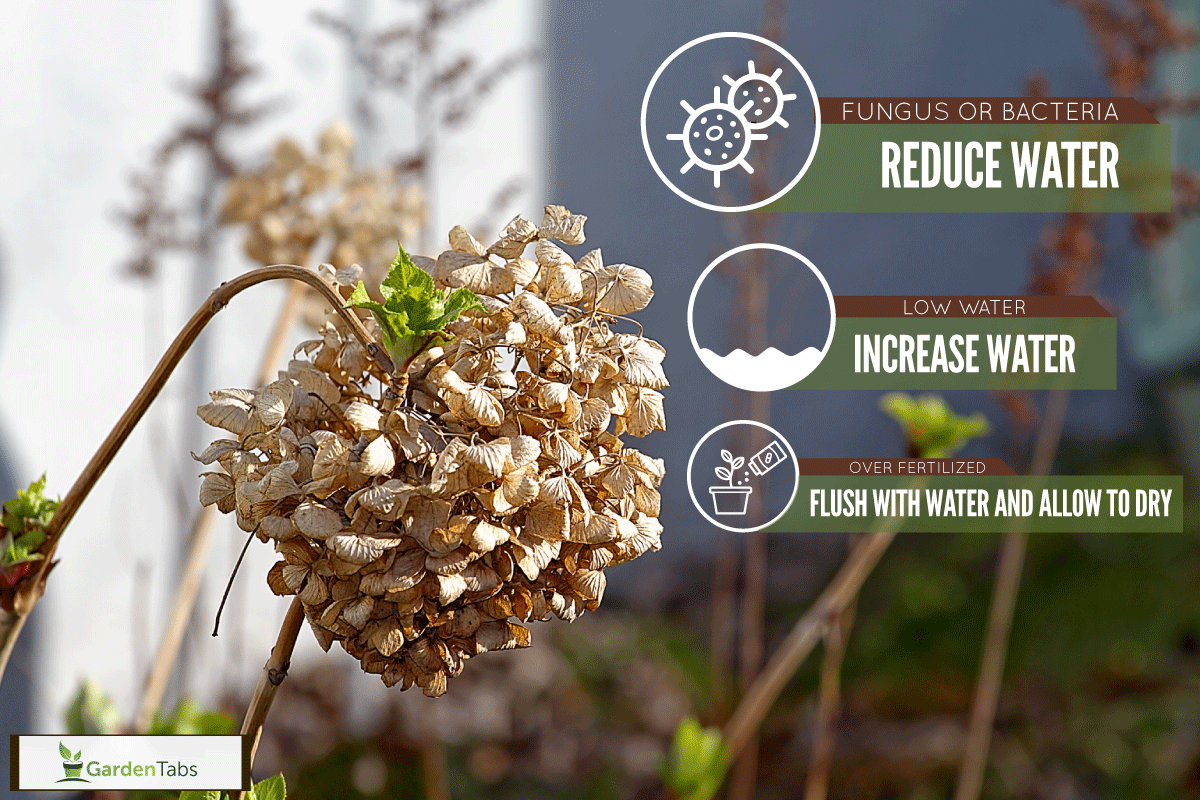
Hydrangea Turning Brown And Dying - What To Do?
What you need to do if your hydrangeas are turning brown and dying will depend on why they are turning brown.
There are typically three main reasons your hydrangeas will start to turn brown and die. These three causes of plant death are fungal or bacterial infection, low water, or too much fertilizer.
Let's look at each of these causes of hydrangea death and learn how to identify which is the cause and how to correct it.
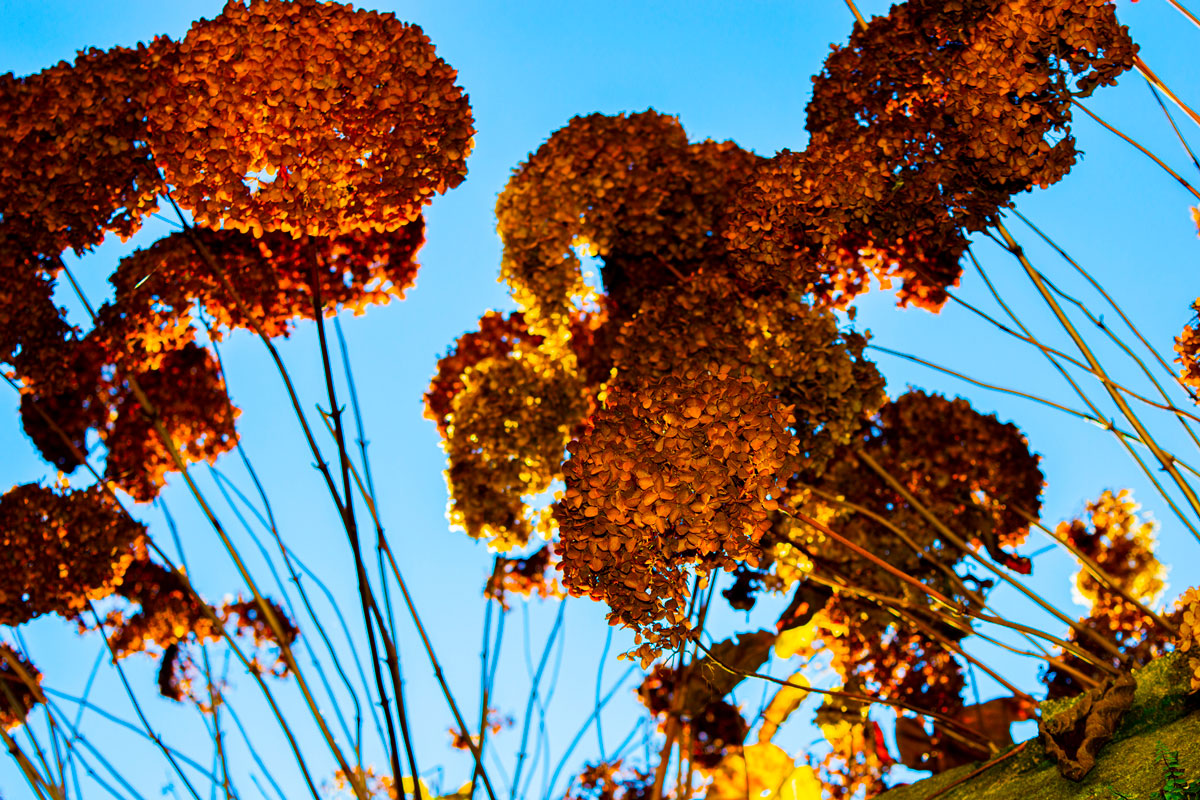
Fungus Or Bacteria
If fungus or bacteria are causing your hydrangeas to turn brown, then there will be spots on the leaves. When you see white spots, it's likely a fungus. If the spots are mostly black, then there's a good chance bacteria is the culprit.
Whether a fungus or bacteria is to blame, the cause is the same, too much water. An excess of water around your plants creates the perfect conditions for fungus or bacteria to multiply.
The first step to helping your hydrangeas will be to lower the amount of water getting to your plants. Achieve this by reducing how many days a week you water your hydrangeas and for how long.
It can also be good to clear away any leaf debris around the base of your hydrangeas. Extra leaf debris can be a breeding ground for fungus and bacteria. Also, pruning some of your hydrangeas to allow better airflow can reduce fungus and bacteria growth.
Once you have lowered the amount of water, cleared away leaf debris, and improved airflow, you will need to treat either fungus or bacteria. If you aren't sure which one you are dealing with, many products on the market treat for both.
Here are two of the best products for treating bacteria and fungus on your hydrangeas.
Garden Safe Fungicide Spray
You can find this product here on Amazon.
BioAdvanced Disease Control
You can find this product here on Amazon.
Keep treating your hydrangeas every week until you see significant improvements.
Low Water
Another cause of hydrangeas turning brown and drying is low water. Low water is the most manageable problem to identify and treat. If your hydrangeas are suffering from low water, the plant's leaves will be wilting, and the soil will be dry to the touch.
If you have identified low water as the cause of damage to your hydrangeas, then the solution is to increase water to your plants.
It's best to increase water to your plants by adding no more than one day a week to your watering schedule, and increase the watering times by 5 minutes. It's vital not to increase water too fast to avoid the many pitfalls of overwatering.
If you notice your hydrangeas don't seem to recover within a week, slowly increase watering times each week until you see your plants responding.
Over Fertilized
If the cause of your hydrangeas turning brown and dying is too much fertilizer, then it's likely you will have noticed the problem a few days after fertilizing. Another sign of over-fertilizing is that the whole leaf will begin turning yellow and dying, not just spots.
If you have over-fertilized your hydrangeas, the solution is to soak the ground around your hydrangeas to rinse excess fertilizer away. Place a hose around the base of each hydrangea for at least ten minutes.
Once you have thoroughly soaked the ground, avoid watering for a few days. If you have successfully removed the excess fertilizer, then within a week, you notice your hydrangeas bouncing back.
If, after a week, your hydrangeas seem sickly and yellow, then you will need to re-soak them to remove more fertilizer.
Once you find your hydrangeas looking healthy, you will know you have rinsed away enough fertilizer.
How Do You Keep Hydrangeas Healthy?
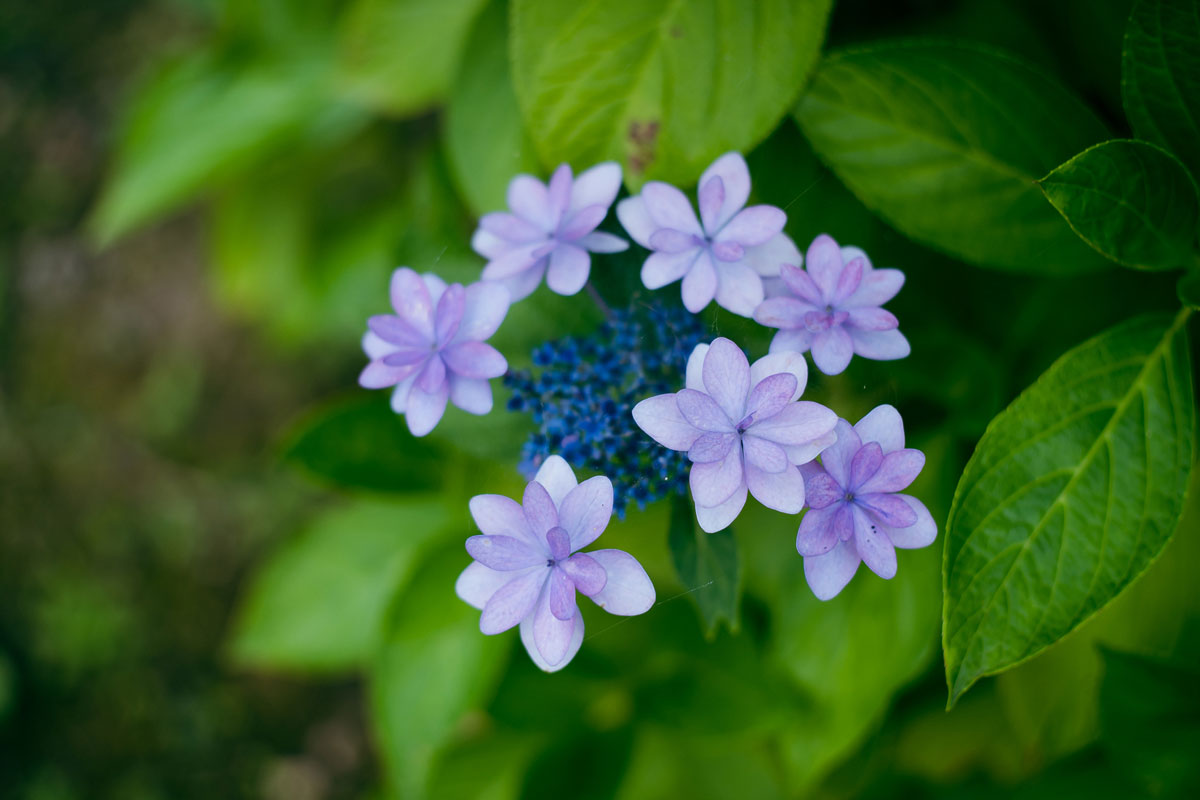
Keeping hydrangeas healthy isn't complicated. But it does require watching your plants and responding to their needs.
The proper watering schedule is the first step to ensuring your hydrangeas are healthy. Water hydrangeas three times a week for at least 20 minutes. This should allow the water to soak deep into the ground and encourage deep root growth.
The next step to healthy hydrangeas is a proper fertilizing schedule. It would be best to fertilize your hydrangeas once in the spring when they first show new growth, and again during the summer to boost health.
You should only put a small amount of fertilizer around the base of each hydrangea. The correct amount of fertilizer is around a quarter cup per plant. But if you wear gloves and sprinkle a small handful around each plant, it will be sufficient.
The last step to ensuring your hydrangeas are healthy is proper pruning. The best time to prune hydrangeas is just before spring but after summer.
While some people like to prune their hydrangeas in the fall, others want to leave the tall stocks to keep their yard interesting in the winter.
With yearly pruning, proper watering, and fertilizing, your hydrangeas are sure to be healthy and look great.
How Do You Prune Hydrangeas?
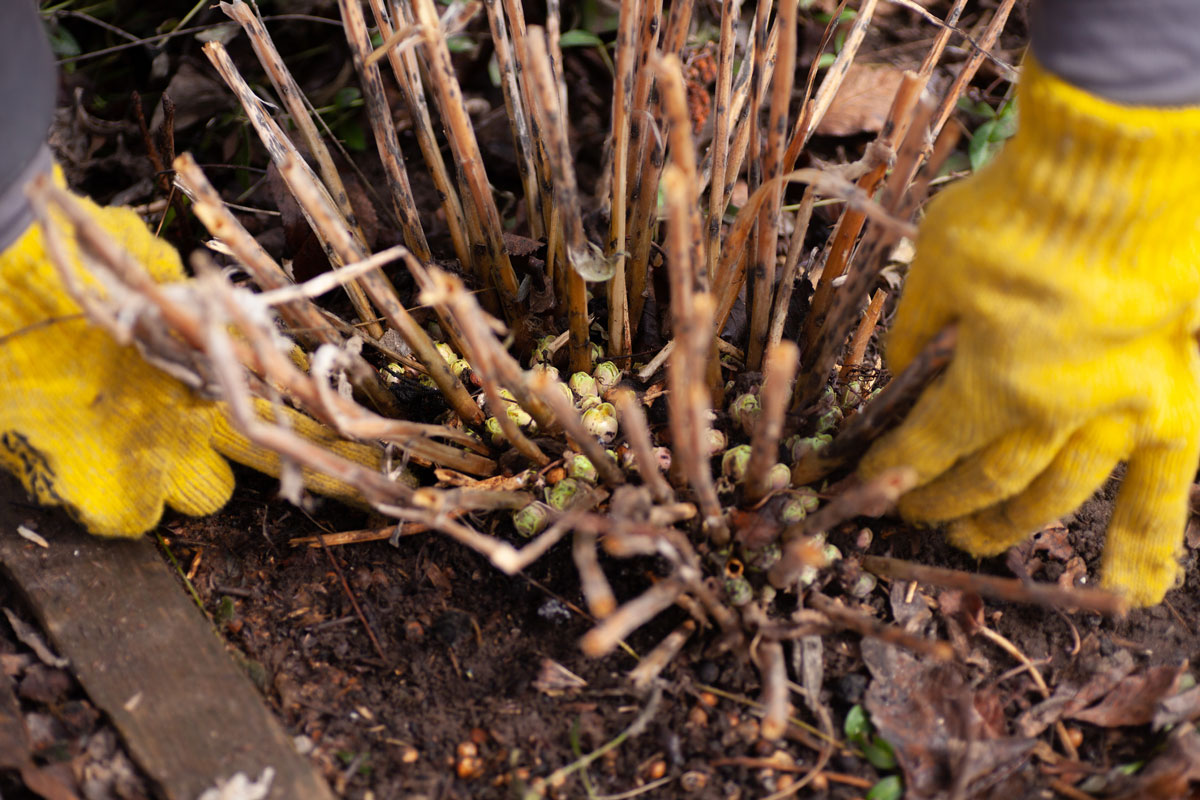
To prune hydrangeas, you will need a pair of hand pruners. Here are two of the most popular hand pruners on Amazon.
Corona Hand Pruner
You can find this product here on Amazon.
Gonicc Titanium Pruning Shears
You can find this product here on Amazon.
Take your hand pruners and cut each stock off the hydrangeas a few inches above the ground. Ensure to cut just above the bulbous parts of the stock.
These bulbous parts of the stock are nodes that the plant uses to grow new stocks. Cutting above these will allow your hydrangeas to grow healthy new stocks in the spring.
Hold your hand pruners at a 45-degree angle when cutting through the stocks. Cutting the stock at an angle ensures you don't cut against the grain of the plant and guarantees a clean cut.
Be sure to rake and remove the plant trimming from around the hydrangeas as the plant trimmings can grow fungus, which can spread to your hydrangeas.
Once you have cleaned up around your hydrangeas, ensure you didn't miss any stocks and your finished pruning.
Do Hydrangeas Come Back Every Year?
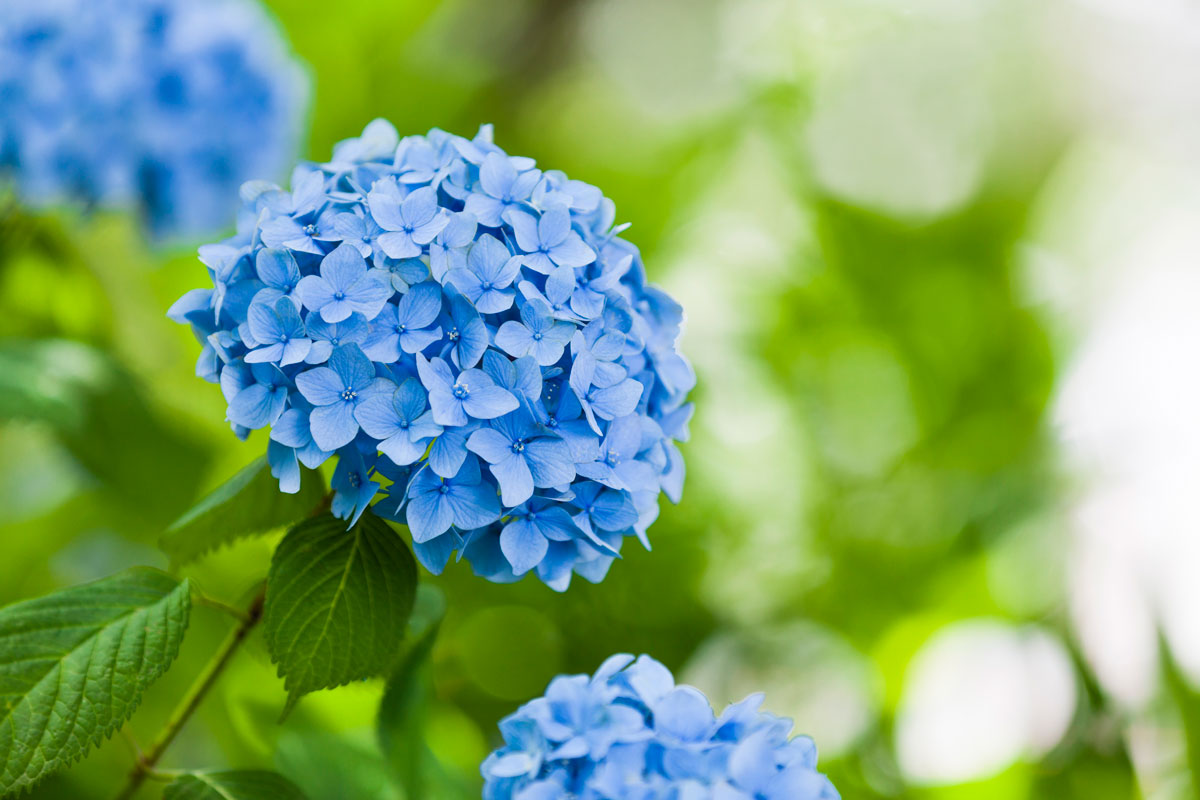
Hydrangeas do come back every year. The top of the plant dies after summer but will regrow each year if taken care of.
There are some situations where your hydrangeas may not come back every year. But that depends on the type of hydrangea you have and where you live.
The main reason hydrangeas won't come back every year is if the roots don't survive winter. So, if you live in an environment where winter is frigid, there's a chance that your hydrangeas won't survive.
There are some breeds of hydrangeas that are hardier in winter conditions. Hydrangeas like the Panicle Hydrangea are exceptionally well suited for winter.
Other species of hydrangeas like Big Leaf Hydrangeas are much more sensitive to the cold and need replanting every year in environments with cold winters.
If you are trying to grow a variety of Big Leaf Hydrangea, it would be best to cover it during winter to help it survive.
How Do You Cover Hydrangeas?
To cover your hydrangeas for winter, you will need to build a small box around them and fill it with leaves to keep away wind chill.
A common way to build a box of leaves around your hydrangeas is to insert four wooden stakes, 1-foot high, around your plant and wrap a small amount of chicken wire around them.
Once you have a small cage to hold leaves, fill it with leaves at least 8 inches deep. Any leaves will work, but irregularly shaped leaves will work better because they trap warm air between them. Pine needles will also work to keep your plant safe from wind chill.
If you live in an environment below zero degrees Fahrenheit in the winter, you should also wrap the outside of the cage with a burlap sack to help keep out the wind.
Be sure to uncover your hydrangeas as soon as freezing temperatures are unlikely for your area.
Final Thoughts
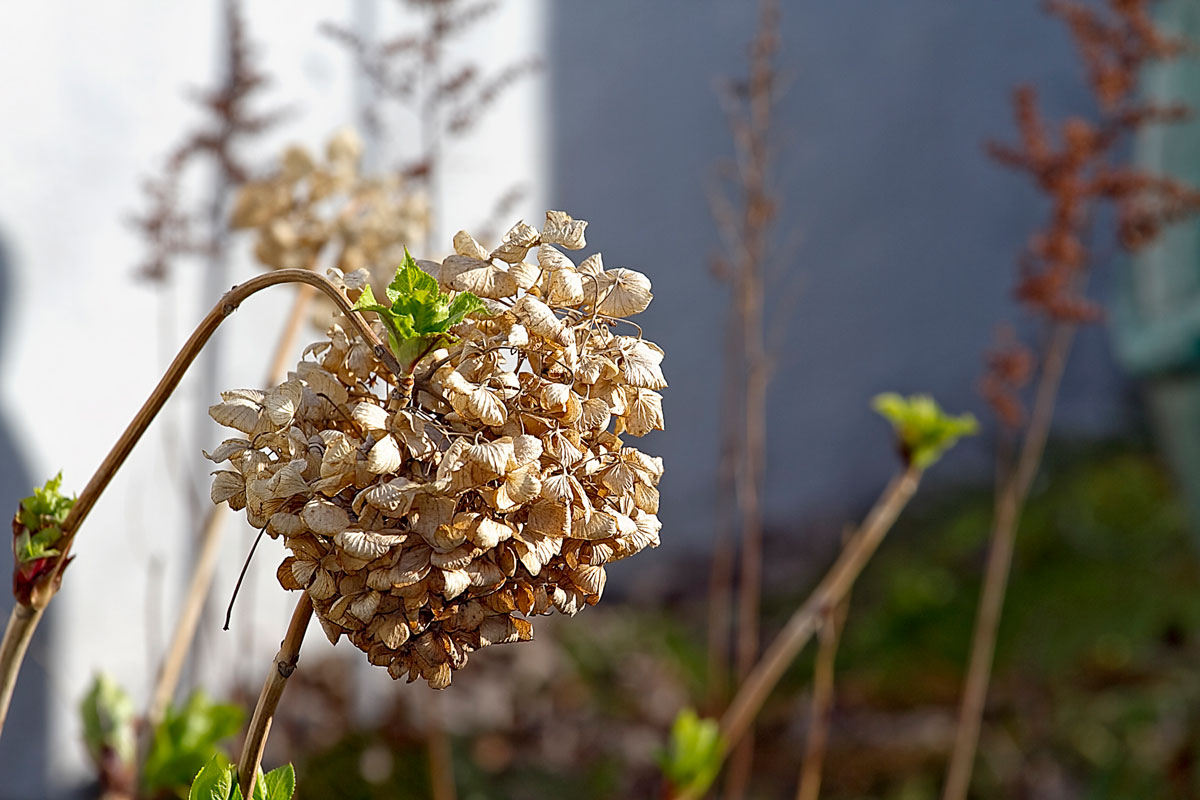
In this article, we learned the leading causes of hydrangeas turning brown and dying and what you can do to help. We also learned how to keep your hydrangeas healthy.
Remember, hydrangeas come back every year, but you may need to help them survive winter depending on where you live and what type of hydrangeas you're growing.
We hope you enjoyed this article. If you want to learn more, check out some of these other posts.




